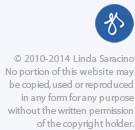Levels of Editing
Most people, even writers, often don’t know what editors really do, or the different levels of hands-on editing. So here’s an overview:
DEVELOPMENTAL EDITING
The editor works closely with the writer to develop the project (usually a book) from concept to completion, and hires researchers, fact-checkers, proofreaders and indexers, as needed. The editor may also provide an overview of the market and the competition.

PROJECT EDITING
Developmental editing without the market overview.
CONTENT ("SUBSTANTIVE") EDITING
The editor makes significant revisions to the text (including re-organizing, cutting, adding and rewriting), and directs the writer, as needed.
LINE EDITING
Content editing “lite.” Little interaction with the writer.
COPY EDITING
The editor corrects grammar, syntax, spelling, punctuation, word usage, consistency errors and more. (Ad agencies often call this level “proofreading.”) Usually includes creating a style sheet for the project.
PROOFREADING
The editor checks the latest version against the previous one (manuscript, page proofs or galleys) to ensure that corrections were made. Includes checking for typos, inconsistencies, new errors, last-minute fine-tuning and more.
AMERICANIZING
Editing translations for correct American grammar, syntax, spelling, punctuation, usage, idiom and nuance. The level of editing needed depends on the quality of the translation.
What I do . . .
Many editors work on just one or two of editing levels. I’m adept at all of them.
Your words, your voice.
One more thing:
Just as it’s crucial for an editor to know the rules and nuances of good writing, it’s crucial (and only right) to preserve the writer’s voice.
And I do.














